DO YOU KNOW THAT DROWNING IS THE LEADING CAUSE OF NON ACCIDENTAL CHILDHOOD DEATH FOR CHILDREN 1-4 AND A CHILD CAN SINK TO THE BOTTOM OF A POOL IN 2 1/2 SECONDS?
According to the Centers for Disease Control and Prevention (CDC), 77% of deaths involve children younger than 5, and on average, there are approximately 356 drowning deaths a year for children 0-14.
And from 2005-2014, there were an average of 3,536 fatal unintentional drownings (non-boating related) annually in the United States, which averages about ten deaths per day.
Furthermore, roughly one in five people who die from drowning are children 14 and younger. And for every child who dies from drowning, another five receive emergency department care for nonfatal submersion injuries.
Unfortunately, it’s true, but preventable.
As a mom of two young children, it was a priority for me to get them enrolled in survival swim classes this summer. Both of my children had some limited exposure with infant mommy and me swim classes when they were both under a year old, but never had formal survival swim training, and I wanted to make sure they had the skills necessary not to drown. These skills include physical, cognitive, mental, and emotional skills. Not only do they need to learn the safety basics but also have the confidence to swim and survive in water if they are ever in trouble, especially in an unexpected or panic like situation.
That’s why we decided to take lessons with So Cal Survival Swim, based in Southern California that helps families in San Diego and Riverside County.
I chose this elite survival swim program so my children could learn how to float and breathe in the water despite the depth of the pool, with the sole intention to learn how to not drown. Survival swimming specifically teaches children the ability to float and breathe while in the water. Later, down the road, I would like to enroll them in more classes that involve more swim technique, but this was the first essential step in the process. I also love that these classes are uniquely customized to each child’s age, developmental level, ability, and are modified based on their ongoing skill.
The classes are conducted in a private 90 degree pool, one student at a time. They are structured for 10 minutes a day, Monday-Thursday, for approximately 4-6 weeks, depending on the age and development of your child. When I first heard of this method, I was a little apprehensive because I am used to enrolling my children in 45 minute or hour long sessions once a week, however, children work really hard in 10 minutes and are often tired by the time they are done, and the constant exposure helps ingrain the skills they need on a more structured basis. It takes a lot of energy to learn new challenging tasks and to master something like not drowning! I also thought the daily commitment would be difficult since we always have so much on our plate, but it is definitely doable and we just made it part of our daily routine just like we do when brushing our teeth or eating dinner.
You can start survival swim classes or infant aquatics as early as six months old. Honestly the earlier the better, but there were children of all ages taking classes. Although there were plenty of babies under the age of 1, there were a lot of toddlers, preschoolers, and even some other children my daughter’s Kindergarten age taking classes. I guess what I’m saying is it’s never too late to help your children learn these essential skills to survive safely in the water. And both of my children loved the classes so much they would ask if they had class on weekends and couldn’t wait until the end of each day to go to class.
The method used in this program is a SWIM-FLOAT-SWIM sequence. This is a proven method that helps teach your child to learn how to transition from a submerged or face-down position in the water to a face-up position to float, and then repeating until they get to the edge for safety. This life saving skill takes a lot of time, patience, and practice, hence the daily lessons. But, it’s amazing what a small child can learn in just a matter of days and how they can master the ultimate skill in just a few short weeks. Sometimes it takes just one moment for a new skill to developmentally click like most milestones!
Through the course of our classes, I have seen my children not only learn the physical skills but also conquer their emotional and mental fears and apprehensions while being in the water. Learning these survival swim skills have empowered them and given them the confidence to swim in any size pool in any depth of water. Because as a child therapist I know that panic can set in within seconds with a fear stress response and I want my children to know what to do to be safe if they get scared or even tired in a pool even in an adrenaline state.
Don’t get me wrong, there have been some growing pains during this process, especially for me! I’m going to be honest, it has been a little anxiety provoking watching your baby learn to swim in a body of water especially if they are struggling a little. As we moms know, children can be sometimes be unpredictable with behavior, and some days my toddler was more focused than other days, delaying the teaching and learning process. Early on during his lessons, he was afraid to open his eyes under the water and it took a few days of dedicated work (his teacher even asked me to get in the water with him for a few days to place my hands under the water and use play skills like asking him to look for toys at the bottom of the pool) to finally help him get over his fear of opening his eyes under the water! But he did, and now his fear is eliminated, but it took some hard work, trust, and some frustration. A couple of weeks later, he was then scared of jumping in the water, but soon, with some time, dedication, and patience he was able to overcome that fear as well! I often had to remind my toddler this was work swimming and not fun swimming and he sometimes had a minor meltdown at the end of class because he wanted to stay in the pool. But that’s obviously expected at his age so I may or may not have bribed him a little with positive reinforcements when he behaved well and followed directions during class.
But I have to admit, I was anxious during the process. I have always had a good relationship with water and have been a good swimmer for as long as I can remember, but watching your innocent, vulnerable children try to learn a new skill without you in a body of water that could kill them in a matter of seconds was often terrifying! There were times I thought he was taking in too much water (even though he wasn’t) or looked like he was scared or struggling and it made me want to jump in the pool and save him. I am only telling you this to prepare yourself to LET GO AND TRUST THE PROCESS!!! Because that is exactly what it is, a process with a new layer each day. As a mom, that is hard to do when it comes to your children. But I had to learn to put my fears and anxieties aside in order to encourage and empower them in the way they needed to learn the skills so I didn’t transfer my fear and anxiety to them.
The owner, Jessica Box, is a mom of three young children and I trust her in the water with my children 100%. She is educated, patient, and kind with the children and takes her job very seriously. In order to become a certified Infant Aquatics instructor, she had to attend an intense 6 week instructor training certification program directed by Infant Aquatics founder Judy Heumann. She is also CPR certified and has years of experience with children of all ages and special needs. She is also the founder of the non profit called One Baby at a Time Foundation, where the mission is to take one baby at a time and prevent childhood drowning. She has been featured on local news numerous times and is also in close collaboration with the American Academy of Pediatrics and Cal Fire. In fact, when quarantine first started, she worked with policy makers, doctors, community leaders, and politicians including California’s Governor, to become the first swim company in the nation to be deemed an essential worker! She mentioned that during the first four weeks of the pandemic, drowning rates more than doubled in Texas and Florida, and that is not acceptable. With her hard work, time, and dedication, she was also able to open the door for other instructors across the country as well.
After weeks of hard work, on the day of graduation, the children come dressed fully clothed in shoes, jeans (or sweats), shirt, and jacket. This is very intentional and strategic since statistically 69% of drownings happen when a parent does not expect their child to be near water and unexpectedly fall in with 15-20 extra pounds of weight from clothes. And now we can throw out our arm floats! I am so proud of my children and am extremely happy with my decision to enroll them in these life saving classes and I am forever grateful to Jessica for helping save my children’s lives in a body of water!
To see more of our classes from start to finish please head to my SWIM CLASS HIGHLIGHTS on Instagram!
Photos by Victoria Parker Photography
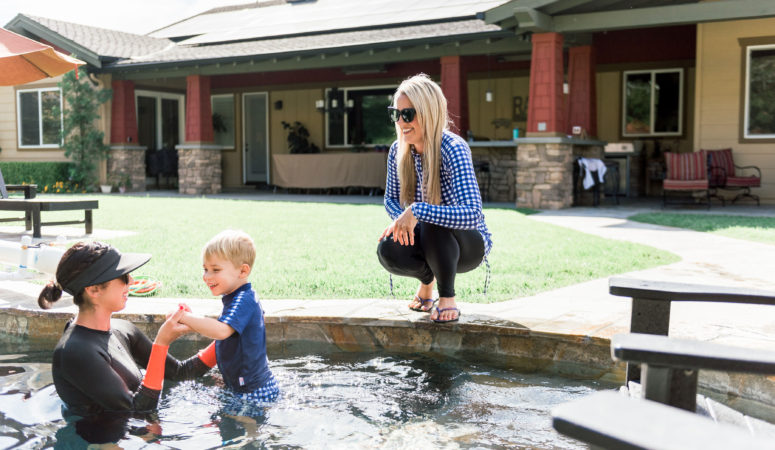
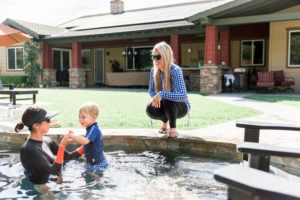
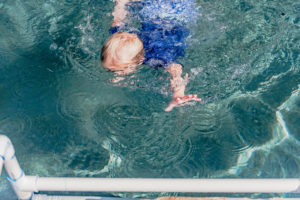

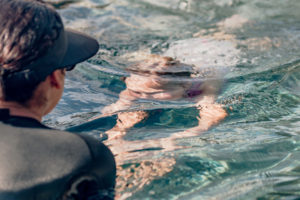
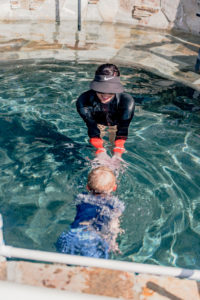
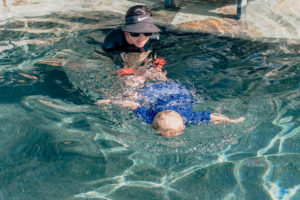
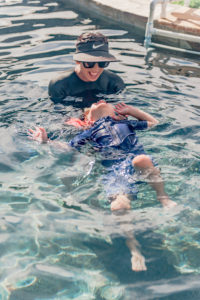
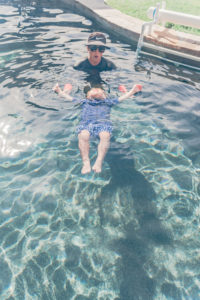
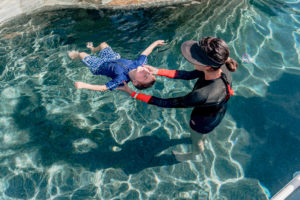
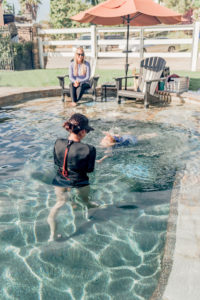
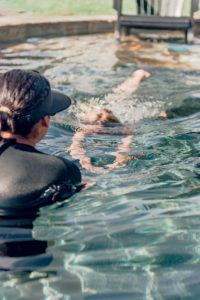
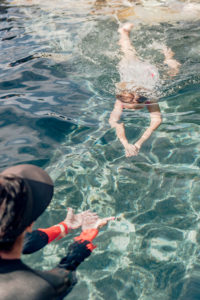
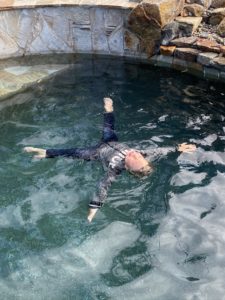

Leave a Reply